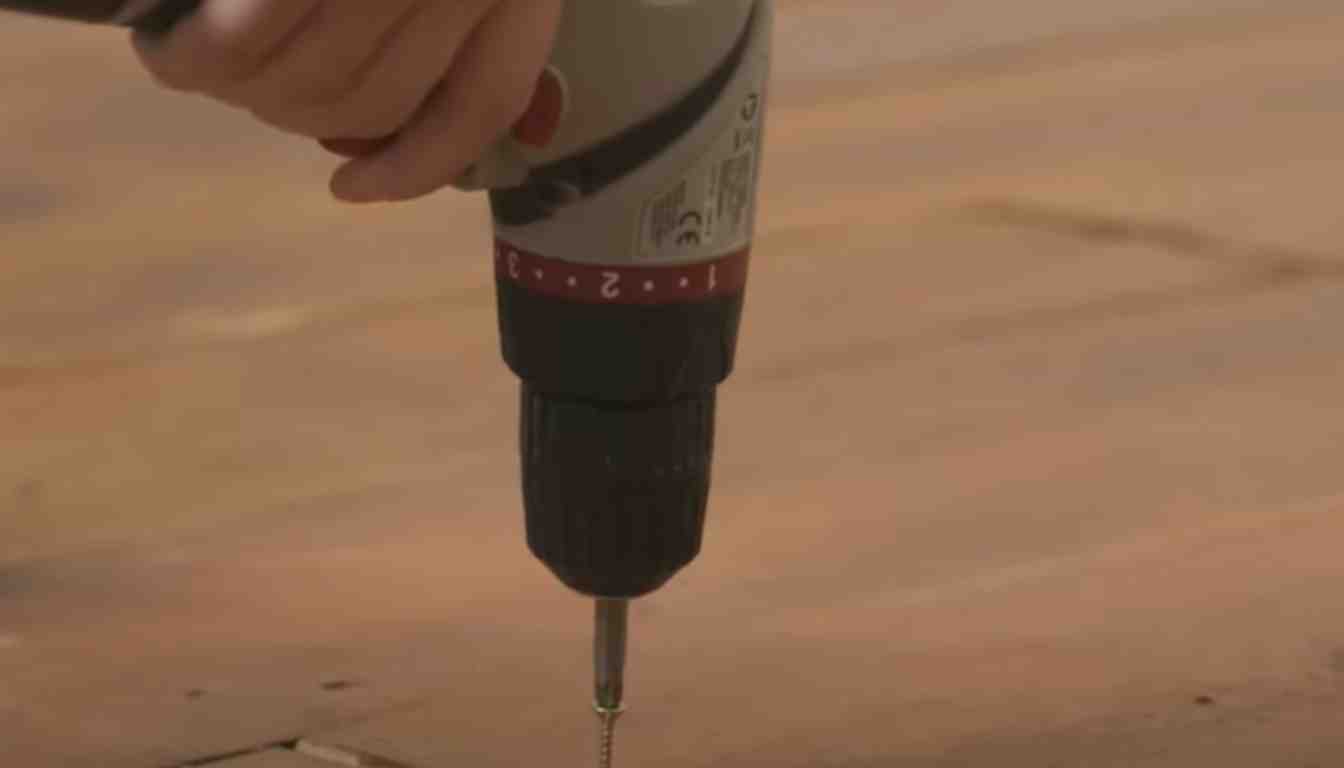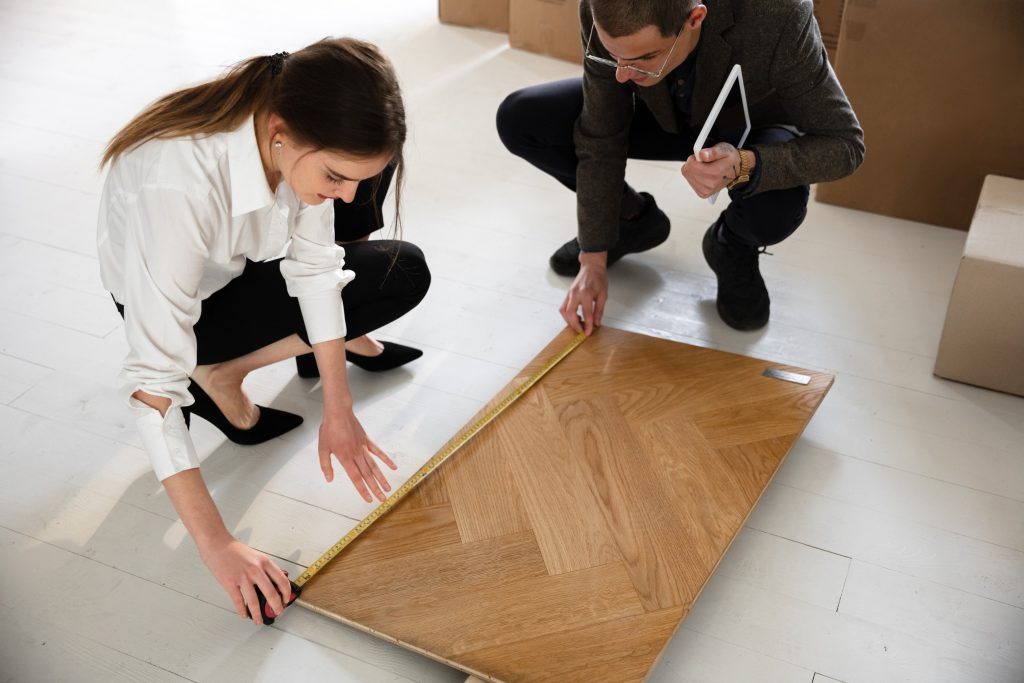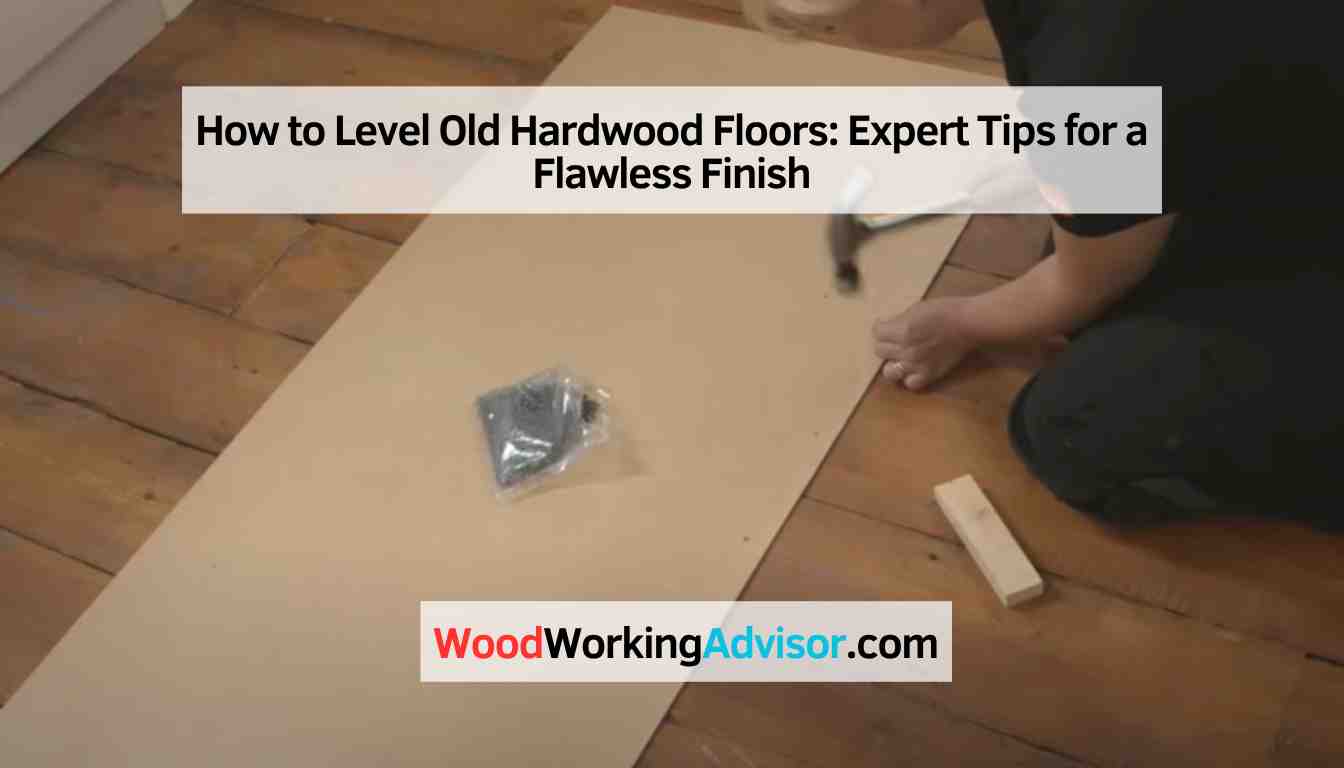To level old hardwood floors, sand the surface to remove imperfections, then refinish for a smooth look. Restoring hardwood floors can enhance the overall aesthetic of your space, while providing durability and longevity.
Old hardwood floors may have uneven surfaces due to wear and tear over time. By leveling them properly, you can ensure a more even appearance and prolong the lifespan of the flooring. This process involves sanding the surface to eliminate bumps and dents, following up with refinishing to achieve a polished finish.
Whether you’re renovating an older home or updating a room, leveling old hardwood floors can transform the look and feel of any space.
Assessing The Condition
When leveling old hardwood floors, the initial step is assessing the condition to determine the best approach.
Identifying Problem Areas
Look for any visible signs of sagging or uneven sections on the floor to pinpoint areas that require attention.
Understanding Floor Type
Knowing the type of hardwood you have helps in selecting the appropriate leveling method.

Preparing The Surface
The first step in preparing the surface of old hardwood floors for leveling is crucial.
Ensuring a clean and smooth base is essential for a successful refinishing process.
Clear debris such as dust, dirt, and loose particles with a broom and vacuum cleaner.
Remove any existing carpet or rugs to expose the full surface of the hardwood floor.
Sweep the floor thoroughly to eliminate any remaining debris that could interfere with the leveling process.
Inspect the hardwood floor for damaged boards and replace or repair them as needed.
Secure loose boards with nails or screws to prevent any potential hazards.
Use wood filler to patch up any cracks or holes in the hardwood floor before proceeding with leveling.
Leveling Techniques
When restoring old hardwood floors, leveling is a crucial step to ensure a smooth and even surface. Below, we’ll explore effective techniques for leveling old hardwood floors.
Using Self-leveling Compound
Self-leveling compound is a popular choice for addressing minor irregularities in old hardwood floors. To apply, mix the compound according to the manufacturer’s instructions and pour it evenly over the floor. The compound will settle into the low areas, creating a level surface. It’s essential to follow proper drying times and application guidelines for optimal results.
Shimming And Sanding
Shimming involves placing thin, tapered strips of wood beneath the subfloor to raise low spots. Once shimming is complete, sanding the entire floor can help blend the shims with the rest of the subfloor, ensuring a seamless finish. This method is effective for more significant irregularities in the floor’s surface, providing a level base for future floor treatments.

Credit: remoteestimation.us
Applying The Finish
Once you have successfully leveled your old hardwood floors, the next step is to apply a finish that will enhance the beauty and durability of the wood. By following these steps, you’ll be able to achieve a stunning result that will make your floors look brand new.
Choosing The Right Stain
Choosing the right stain is crucial to achieving the desired look for your hardwood floors. Consider the color and tone you want to achieve, as well as the type of wood you are working with. Keep in mind that different stains can produce different effects on various types of wood.
To choose the right stain, consider testing a small section of your hardwood floors with different stain options to see which one complements the wood and your overall aesthetic. Take into account factors such as lighting in the room and the existing decor to ensure a cohesive look.
Once you have selected the right stain, apply it evenly and allow it to dry thoroughly according to the manufacturer’s instructions. Taking your time during this step will ensure a professional and even finish.
Sealing And Protecting The Surface
After the stain has dried, it’s essential to seal and protect the surface of your hardwood floors. This step helps to enhance the longevity of the wood while also providing added resistance against stains, scratches, and moisture.
There are various options when it comes to sealing your hardwood floors, including polyurethane, oil-based finishes, and water-based finishes. Each option has its own benefits and considerations, so be sure to research and choose the one that best suits your needs and preferences.
| Finish Type | Advantages | Considerations |
|---|---|---|
| Polyurethane | High durability, excellent moisture resistance | Can be more difficult to apply and may require multiple coats |
| Oil-based finishes | Enhance the natural color, deep penetration | Strong odor during application, longer drying time |
| Water-based finishes | Faster drying time, low odor | May require more frequent maintenance, less effective against scratches |
After you have selected the appropriate finish, carefully apply it following the manufacturer’s instructions. Use a high-quality brush or applicator to ensure an even and smooth finish. If necessary, apply multiple coats, allowing adequate drying time between each coat. This will result in a durable and long-lasting finish for your newly leveled old hardwood floors.
Maintenance And Care
When it comes to maintaining and caring for old hardwood floors, a regular cleaning routine is key. By taking the time to clean your floors on a consistent basis, you can prevent dirt, dust, and debris from scratching the surface. Additionally, by implementing preventative measures, you can ensure that your floors remain level and even. Here, we will explore some maintenance and care tips to help you keep your old hardwood floors in top condition.
Regular Cleaning Routine
Implementing a regular cleaning routine is vital to the longevity and appearance of your old hardwood floors. Here are a few steps to include in your routine:
- Sweep or vacuum the floors daily to remove loose dirt and debris. This will prevent them from scratching the surface and causing damage.
- Use a damp mop with a hardwood floor cleaner to remove stuck-on dirt and grime. Avoid using excessive water, as it can seep into the wood and cause swelling or warping.
- Wipe up spills immediately to prevent water damage. Use a soft, absorbent cloth and gently remove any liquid to avoid staining or warping the wood.
- Consider using area rugs or doormats in high traffic areas to protect your floors from excessive wear and tear. Ensure the rugs have a non-slip backing to prevent accidents.
Preventing Future Unevenness
In addition to regular cleaning, there are precautions you can take to prevent future unevenness in your old hardwood floors:
- Monitor the humidity levels in your home and use a humidifier or dehumidifier as needed. Fluctuations in humidity can cause the wood to contract or expand, leading to unevenness.
- Place furniture pads or felt protectors under heavy furniture to distribute weight evenly and prevent indentations or scratches on the surface.
- Avoid wearing shoes with hard soles or high heels indoors, as they can cause damage to the wood. Encourage household members and guests to remove their shoes upon entering to minimize wear and tear.
- Regularly inspect your floors for any signs of damage or unevenness. If you notice any issues, it’s essential to address them promptly to avoid further damage.
By implementing a regular cleaning routine and taking preventative measures, you can effectively maintain and care for your old hardwood floors. With proper maintenance, your floors will continue to enhance the beauty and value of your home for years to come.

Credit: www.finehomebuilding.com
Frequently Asked Questions On How To Level Old Hardwood Floors
Can You Level Old Hardwood Floors?
Yes, old hardwood floors can be leveled using sanding and refinishing techniques. Professional assessment is recommended for the best results.
How Do You Fix Old Uneven Wood Floors?
To fix old, uneven wood floors, sand down high spots, fill gaps with wood filler, then sand again for smoothness. Finish with stain and sealant for a refreshed look.
How Do You Level An Uneven Old Floor?
Level an uneven old floor by first identifying low spots. Fill with leveling compound, then sand and smooth the surface for a flat finish.
How Do You Level Old Saggy Hardwood Floors?
To level old saggy hardwood floors, identify the low spots then add shims or self-leveling compound to even them out. Sand high spots, or hire a professional to ensure correct leveling. Regular maintenance and addressing issues promptly help prevent severe floor sagging.
Conclusion
Reviving old hardwood floors can bring charm back into your home. With the right tools and techniques, you can restore your floors to their former glory. Proper leveling ensures a smooth and even surface, enhancing the overall appearance. It’s a worthwhile investment that will leave your floors looking fresh and rejuvenated for years to come.


